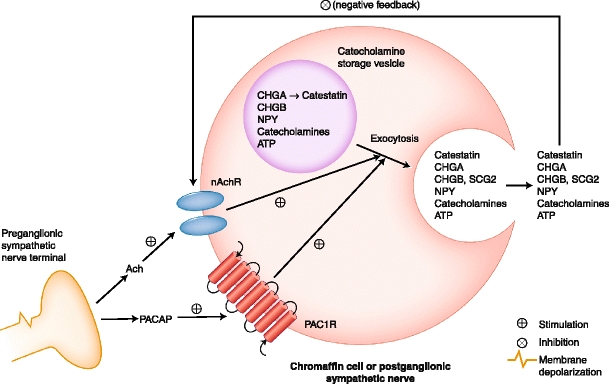Fig. 1.

Intracellular and extracellular chromogranin/secretogranin actions. Chromaffin granule transmitter storage and exocytotic release are depicted, with secretion in response to the preganglionic transmitters acetylcholine (Ach) or pituitary adenylyl cyclase activating polypeptide (PACAP). Catestatin, the endogenous nicotinic cholinergic antagonist (ganglionic-blocking) peptide fragment of CHGA, inhibits the principal physiological trigger of chromaffin cell secretory stimulation: the nicotinic cholinergic pathway. ATP—adenosine triphosphate; CHGA—chromogranin A; CHGB—chromogranin B; nAchR—nicotinic cholinergic receptor; NPY—neuropeptide Y; PAC1R—PACAP type 1 receptor; SCG2—secretogranin II. (Adapted from Mahapatra et al. [1])
